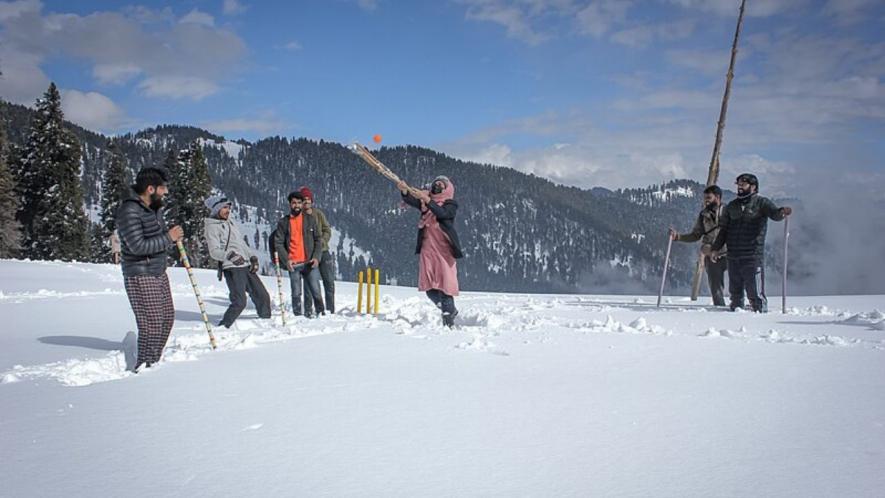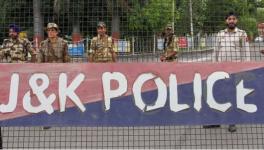Cricketisation: Beacon or Mirage in J&K’s Unemployment Struggle?

Image Courtesy: Wikimedia Commons
Cricket, a sport traditionally linked to colonial Britain, was introduced to India, particularly Kashmir, by figures like Tyndale Biscoe. Biscoe played a pivotal role in popularising cricket and other sports in the region, making them compulsory in educational institutions. Students who resisted participation faced penalties, such as increased fees or even expulsion.
At that time, the public perception of sports was largely negative due to several factors, including the caste system. Kashmiri society was highly stratified, with education and, consequently, participation in sports limited to the higher castes. Many from these upper castes avoided sports, fearing that physical development might make them appear to belong to lower castes. Additionally, parents often viewed sports as a waste of time.
The introduction of sports in Kashmir was not merely about promoting physical fitness but also about imposing the cultural values of the colonisers onto the local populace. Over time, the values and norms of the colonisers became ingrained in the local society. Today, cricket is seen primarily as a form of leisure and entertainment in Kashmir. Originally played only on weekends, the sport has since experienced a “Massification,” becoming a daily activity.
Cricket has gained immense popularity in Kashmir, with spectators now often more enthusiastic than participants. This shift can be attributed to widespread unemployment, as many young people engage in activities that offer no tangible economic benefit. The unhealthy competition fostered by sports often leads to a never-ending cycle of rivalry, as famously articulated by author George Orwell: “Serious sport has nothing to do with fair play… it is bound by hatred, jealousy, boastfulness, disregard of all rules, and sadistic pleasure in witnessing violence.”
While the breathtaking landscapes of Jammu and Kashmir are widely recognised, the region also faces complex political and geographical challenges. Political instability, inadequate industrial growth, and excessive reliance on government employment are the root causes of this crisis.
In such a context, important issues like unemployment, particularly among the youth, are often overlooked in policy deliberations. The region, like many other Indian states, has been grappling with persistently high unemployment rates. According to an Oxfam poll, a significant portion of the Kashmiri youth is unemployed due to inadequate infrastructure and limited government support, which restricts access to economic opportunities.
Despite holding undergraduate degrees, over 700,000 young individuals aged 18 to 30 are unemployed in the region. Jammu and Kashmir (J&K) have the highest unemployment rate compared with neighbouring states, with 241 out of every 1,000 individuals jobless. The contributing factors include the consolidation of government departments, slow hiring processes, and job cuts.
The Union Territory (UT) also lacks formal programmes to promote self-employment and entrepreneurship among the youth. With a scarcity of industries and corporate establishments, government jobs remain the primary source of employment. As of June 2021, the J&K Department of Employment had registered 48,908 young individuals, 21,205 of whom were graduates. The unemployment crisis in Jammu and Kashmir is complex, with a concerning unemployment rate of 24.6%, significantly higher than the national average.
The alarmingly high unemployment rate in J&K can help explain some of cricket’s meteoric rise. Faced with economic hardship and a lack of job opportunities, many young people turn to cricket and other sports for hope and a potential career path. The region’s well-known cricket bat manufacturing industry and the sport’s extensive media coverage, which captivates younger audiences, are further factors in its popularity.
Various factors, including unemployment, the love of cricket, media influence, and cricketing role models, have all contributed to the sport’s growing appeal. Regional cricket tournaments often receive sponsorship from entrepreneurs, providing short-term financial relief to players. Organisations like the Adani Foundation have also funded individual cricketers. However, there are risks in relying on external sponsors, as these programmes often prioritise immediate fame and financial gain over long-term career development. To safeguard their futures, young athletes and their families must carefully evaluate offers and seek guidance.
The motivational role of successful players, both nationally and regionally, has been another key factor in cricket’s rising profile in Kashmir. The achievements of well-known players, such as Abdul Samad, Parvaiz Rasool, and Umran Malik serve as “Reference Groups,” shifting the aspirations of the youth from academic success to sports stardom.
Cricket has evolved into more than just a sport in Kashmir; it represents a potential escape from the region’s high unemployment rate, offering fame, wealth, and even global recognition. However, this intense competition can lead to social discord, as rivalry often breeds hatred, threatening social harmony. As Orwell observed, “As soon as strong feelings of rivalry are aroused, the notion of playing the game according to the rules always vanishes.” This not only creates divisions among players but also among spectators, who often view the game as a battle with one side seeking to humiliate the other a war without shooting.
A significant concern arises from the potential for governing bodies to prioritise cricket promotion at the expense of education and career guidance. While engaging youth in cricket might seem like a strategy to unite and involve them, it raises questions about the neglect of other crucial areas such as education and professional development. Critics argue that an overemphasis on cricket could inadvertently hinder young people’s ability to acquire essential skills and pursue viable careers outside of sports. If their sports careers do not pan out as expected, many may struggle to find stable employment.
In recent years, cricket’s prevalence in the J&K region has increased, likely driven by rising unemployment rates. Faced with limited job prospects and economic challenges, many young people turn to cricket for a sense of purpose, hope, and potential career opportunities. With few private sector jobs available, many young Kashmiris see cricket to pass the time and earn pocket money by playing for local teams. However, this can lead to increased competition and tension among teams, resulting in significant time and money invested without long-term benefits.
This situation underscores the need for a holistic approach to youth development, particularly in regions like Jammu and Kashmir, where socio-economic and political challenges limit opportunities. The Indian government and regulatory bodies have historically viewed cricket as a symbol of national pride and a tool for promoting unity. It is also seen to foster what Benedict Anderson calls “Imagined Communities.”
There is a belief in the region that promoting cricket can unite people, boost regional patriotism, and stimulate economic growth. While encouraging youth participation in cricket is commendable, the government must also prioritise comprehensive career support. This includes expanding educational opportunities, vocational training, and career counselling services, along with promoting alternative sports and activities that can guide individuals toward different career paths. Overemphasis on cricket without providing access to these support systems may limit options for many young people if their sports careers do not materialise.
The government should also focus on making sports facilities available in schools so that talented students have a platform to showcase their skills and build long-term careers in sports. Additionally, attention should be given to developing sports infrastructure, such as playgrounds and indoor stadiums, to support students and players who excel in sports. Encouraging students to display their talent in various sports can help those who are genuinely skilled to pursue a long-term career in the field.
To address these challenges, governments should work to create a balanced environment that integrates both education and sports. It is essential to provide career counselling and vocational training to young people, preparing them for life after sports and making them aware of the diverse employment opportunities available.
Focusing exclusively on cricket without investing in education and other sectors could lead to long-term socio-economic issues, as not everyone can sustain a career as a professional athlete. Cricket has the potential to be a powerful tool for social change and youth engagement, but the government must adopt a more comprehensive strategy that includes education, skill development, and career counselling. This approach will ensure that the youth in regions like Jammu and Kashmir have the resources they need to achieve lasting success, whether they choose to pursue sports-related careers.
The writers are pursuing a Ph.D. from Jamia Millia Islamia (a central university) in New Delhi. The views are personal.
Get the latest reports & analysis with people's perspective on Protests, movements & deep analytical videos, discussions of the current affairs in your Telegram app. Subscribe to NewsClick's Telegram channel & get Real-Time updates on stories, as they get published on our website.
























